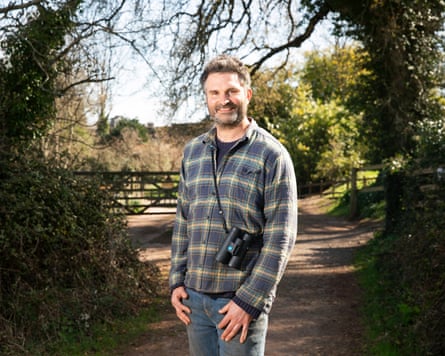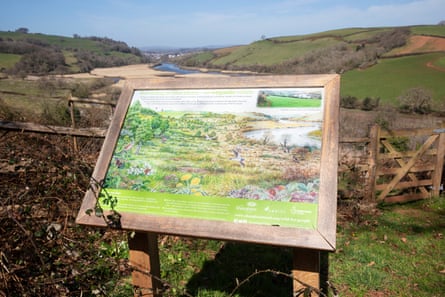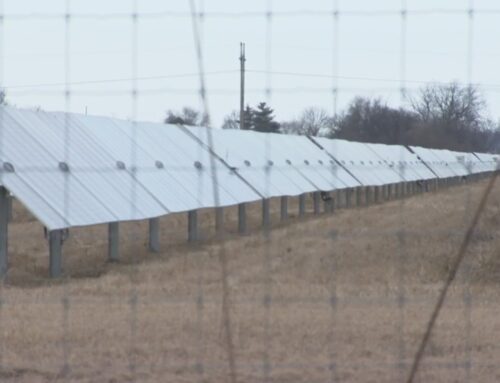Nature nurture: the Devon estate where rewilding and mental health go hand in hand
May 1, 2025
Two landscapes separated by a wide sweep of river tell a story of change. On one side is traditional farmland, close-cropped grazing, uniform grasses, neatly tended hedges and a sparsity of trees, a farmscape ubiquitous across England. On the riverbank opposite, rougher, less uniform grasses grow unevenly between trees, thistle and brambles, in a chaos of natural disorder swaying in the breeze towards the reedbeds below.
The land on the Sharpham estate side of the River Dart used to be a mirror of the traditional farmscape on the opposite bank. It hosted a non-organic dairy farm and a vineyard, within a tightly controlled 18th-century heritage landscape of deforested parkland.
But five years ago the managers of the trust began a process of nature restoration within the 223-hectare (550-acre) site in south Devon, with a vision of tackling the twin crises of the 21st century: a rise in people suffering from mental health conditions and a catastrophic loss of the natural world.

Sharpham, an estate created by a naval sea captain made wealthy from a plunder of Spanish treasure, had for years hosted Buddhist-inspired retreats, where people came to seek help with mental resilience, cope with trauma and feel grief. But after taking over as director of the estate, Julian Carnell, a teacher and conservationist, looked at the landscape and felt a conflict.
“I was conscious that people were coming on mindful retreat here, but there was a disconnection with how we were managing the land,” said Carnell. “I wanted to do something a bit more holistic with the land and combine really our mental health work with our conservation.
“Policymakers tend to see nature as a headache, something to get their way around. But alot of people are struggling in their own lives, whether it is the cost of living crisis or stress, or mental health – there are 8.7 million people on antidepressants, and huge waiting lists for counselling. We have turned things round to show that … [nature] is a fantastic resource to support people, and those people then go on to want to care for it.”
To connect with as many people as possible, the nature restoration on the estate, which is run as a social enterprise, was designed with access for people in mind so that the environment could be used as therapy in a seamless way.
In a protected heritage landscape, Carnell and Jack Skuse, his rewilding partner and the director of Ambios, had to be mindful of the past. “We had to balance the heritage designation with our environmental ambitions, so what we are doing is pushing the envelope a bit,” said Carnell. “We are returning to something more like wooded pastureland.”

They secured a national lottery heritage grant for the nature restoration project and visited the Knepp estate, where Isabella Tree and Charlie Burrell pioneered rewilding, and turned the conventional 1,416-hectare (3,500-acre) farm into a place thrumming with wildlife in barely two decades.
Carnell and Skuse scanned 18th-century maps of the estate, replanted trees in original locations, planted orchards, removed the vineyard and replaced it with a wildflower meadow, opened up viewpoints, improved access and rebuilt a bridge.
“We wanted our story to be about education and outreach,” said Skuse, whose company trains people in nature conservation. “We are living through catastrophic declines in wildlife and something fundamental has to change. We brought schoolchildren in, we brought farmers here and got them talking, to try inspire and reassure them.
“We used this beautiful storytelling landscape and pioneered a change in land use from dairy farm and vineyard, into something that prioritises wildlife and nature recovery.”

Twelve months in, the transformation was already visible. As a thick, uneven sward of vegetation took over the valley, providing structure and cover for wildlife, the land came alive. “You walked through the fields and the small animals like voles and mice were spilling out everywhere, bouncing and popping up and down all over the place. Their population exploded,” Skuse said.
In the second year, the predators came. “We have barn owls foraging every day across the fields, picking out the small animals, kestrels hovering above the ground and diving into long grass, and now breeding on site, which we have never had before.”
There are sightings of ospreys, one of the largest birds of prey in the UK, which is on the at-risk register because of its historical decline and low breeding numbers.
Today nature restoration spreads across 61 hectares (150 acres), with regular butterfly, bird, vegetation and tree surveys carried out by Skuse and his team. There have been notable wins: a flock of 500 goldfinches, drawn to the food source from the grass and thistles; the appearance of the common whitethroat, which is on the amber list of the birds of conservation concern; stonechats, which are normally coastal, feeding and breeding on site; and curlews nesting. Each year, the surveys show consistent rises in butterflies. “These are big changes to what was otherwise a fairly standard farmland,” said Skuse.
The rewilded landscape is now a source of the therapy offered at Sharpham. “We are here as a mental health charity to connect people to nature,” said Carnell.
Carnell is in touch with NHS professionals to help tackle the crisis in retention of staff in the service. Last year GPs and primary healthcare staff from Brighton and Hove Federation were given the opportunity to attend the nature retreats.

“I cannot tell you the impact, it is extraordinary,” said Dr Rachel Cottam, a GP in Brighton who attended a mindfulness retreat at Sharpham.
“People feel that they are more calm and less stressed, but they also feel it enables them to touch into their original motivation for going into this caring work, which can be so hard, and to find joy again. I am sure it not only improves the way they work but trickles into improved patient care,” she said.
Since the nature restoration project began at Sharpham in 2020, the political narrative has changed. While Labour promised before the election to preserve Britain’s natural beauty and reverse environmental degradation, the rhetoric from Keir Starmer and Rachel Reeves now sets nature against growth and the government has halted environmental grants for farmers.
Meanwhile, the government’s benefits cuts coincide with mental health waiting lists stretching up to 18 months or more.
Carnell believes that Sharpham’s most powerful response over the next five years is to continue to show nature as a powerful restorative and preventive prescription to keep people healthy and resilient.
“If you look at the various crises we face – the biodiversity crisis, the climate crisis, the mental health crisis – we tend to think about them in silos,” said Carnell. “But they are all interrelated, so we need a much more coherent, holistic approach.”
Search
RECENT PRESS RELEASES
Related Post




